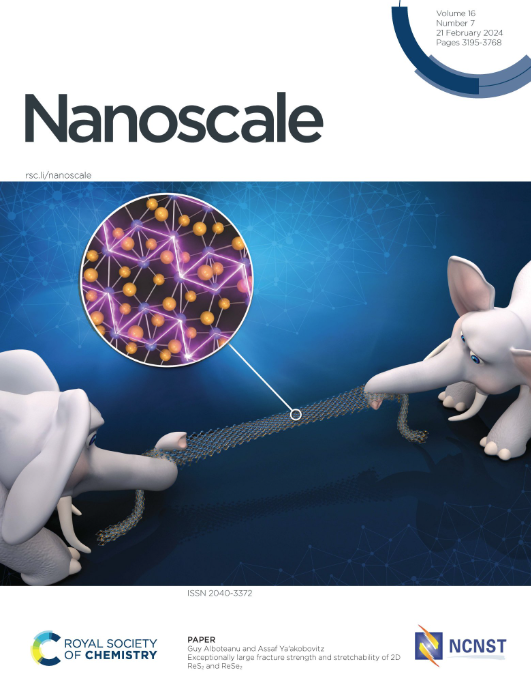Covalent organic framework encapsulated multi-walled carbon nanotubes for ultrasensitive electrochemical determination of lead ions in water and e-cigarette samples
IF 5.8
3区 材料科学
Q1 CHEMISTRY, MULTIDISCIPLINARY
引用次数: 0
Abstract
Trace amounts of lead ions present in aqueous solutions pose significant health risks to humans. Therefore, it is crucial to develop a sensor capable of rapidly detecting trace amounts of Pb(II). We developed a material utilising covalent organic frameworks encapsulating multi-walled carbon nanotubes (Tp-Bpy-COF@MWCNTs). The physicochemical properties of Tp-Bpy-COF@MWCNTs were analysed using transmission electron microscopy (TEM), scanning electron microscopy (SEM), X-ray photoelectron spectroscopy (XPS), X-ray diffraction (XRD), and Fourier transform infrared spectroscopy (FTIR), confirming the successful encapsulation of MWCNTs by the COF. Tp-Bpy-COF@MWCNTs exhibited excellent conductivity and a porous structure. Using the Tp-Bpy-COF@MWCNT sensor for Pb(II) detection, the detection limit reached 0.0749 μg L−1, demonstrating higher sensitivity at 0.221 μA μM−1 cm2 compared to existing technologies. Additionally, the sensor showed good recovery and repeatability for detecting Pb(II) in actual water samples, indicating its potential for Pb(II) detection applications.

水溶液中的痕量铅离子会对人体健康造成严重危害。因此,开发一种能够快速检测痕量铅(II)的传感器至关重要。我们开发了一种利用共价有机框架封装多壁碳纳米管(Tp-Bpy-COF@MWCNTs)的材料。我们使用透射电子显微镜 (TEM)、扫描电子显微镜 (SEM)、X 射线光电子能谱 (XPS)、X 射线衍射 (XRD) 和傅立叶变换红外光谱 (FTIR) 分析了 Tp-Bpy-COF@MWCNTs 的理化性质,证实 COF 成功封装了 MWCNTs。Tp-Bpy-COF@MWCNTs 具有优异的导电性和多孔结构。使用 Tp-Bpy-COF@MWCNT 传感器检测铅(II),检测限达到 0.0749 μg L-1,与现有技术相比,灵敏度更高,达到 0.221 μA μM-1 cm2。此外,该传感器在检测实际水样中的铅(II)时显示出良好的回收率和重复性,表明其在铅(II)检测应用方面具有潜力。
本文章由计算机程序翻译,如有差异,请以英文原文为准。
求助全文
约1分钟内获得全文
求助全文
来源期刊

Nanoscale
CHEMISTRY, MULTIDISCIPLINARY-NANOSCIENCE & NANOTECHNOLOGY
CiteScore
12.10
自引率
3.00%
发文量
1628
审稿时长
1.6 months
期刊介绍:
Nanoscale is a high-impact international journal, publishing high-quality research across nanoscience and nanotechnology. Nanoscale publishes a full mix of research articles on experimental and theoretical work, including reviews, communications, and full papers.Highly interdisciplinary, this journal appeals to scientists, researchers and professionals interested in nanoscience and nanotechnology, quantum materials and quantum technology, including the areas of physics, chemistry, biology, medicine, materials, energy/environment, information technology, detection science, healthcare and drug discovery, and electronics.
 求助内容:
求助内容: 应助结果提醒方式:
应助结果提醒方式:


